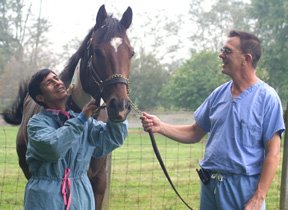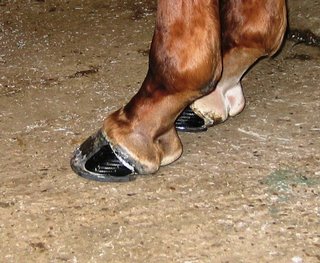
This is second-hand news, so please wait for an official announcement before believing it, but...
In an interview in the Philadelphia Inquirer this weekend, owner Gretchen Jackson reported that she expects half of the donations to the Barbaro Fund at the University of Pennsylvania's New Bolton Center will go to laminitis research.
"Isn't that nice?" you may be musing..."Bring me some real news!" But wait...generous people have already donated more than $1.25 million to the fund, which means that roughly $600,000 will go to research.
But whose research? Chances are, the funds will stay right at New Bolton Center, where a laminitis research initiative has been on the wish list anyway.
Here's a quote lifted from the article: One of her (Gretchen Jackson, owner of Babaro) top priorities, she said, is New Bolton's Barbaro Fund, which has received 1,500 contributions totaling $1,225,000. Jackson said half the fund is slated to go for laminitis research, in the grandest-scale attempt yet to eradicate the disease. She's had a conversation with Secretariat's owner, Penny Chenery, about the disease, because Secretariat died from it.
http://www.philly.com/mld/philly/news/special_packages/latest/15592399.htm
In the photo: jockey Edgar Prado visiting with Barbaro and surgeon Dean Richardson on September 19. Photo by Sabina Louise Pierce/University of Pennsylvania.



